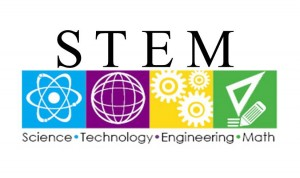Intertech Announces STEM Scholarship (Post 1 of 2)
 First of two blog posts in this series
First of two blog posts in this series
Maybe it has something to do with becoming a dad—or maybe it’s just the good ‘ole enlightened self-interest of a technology business owner—but in the past year I’ve help guide an expansion of Intertech’s philanthropy and the giving focus of the Intertech Foundation to include science and technology learning for young people.
Specifically, Intertech (the company) became a sponsor of the FIRST Robotics Minnesota regional high school tournaments in Duluth and Minneapolis. In addition, Intertech Foundation provided 50 grants to individual FIRST teams across the country. And, most recently, the Foundation has begun funding a $2,500 college scholarship to help an aspiring computer science student with his or her first year of academic expenses. We plan to make our first award to a worthy student beginning college in the fall of 2015.
We don’t expect our philanthropy efforts to single-handedly turn the tide of frequently disappointing math and science scores among U.S. high school students. Fortunately, we do not have to carry the burden alone. Thousands of new programs exist to encourage K-12 students to do better in these areas and, equally important, to understand the important connection between STEM education—science, technology, engineering and mathematics—and great career opportunities. (I will explore the STEM/career angle more in my next post).
You’ve probably read about the movement to teach kids software coding skills. There’s a good video (Ted YouTube channel) featuring Mitch Resnick from the MIT Media Lab on the importance of helping kids to become “fluent” with new technologies. He describes how learning to create software builds problem-solving, creativity and communication skills. I couldn’t agree more.
Many mistakenly assume kids are “digital natives” Resnick explains, but he rightly points out the difference between using technology and having the skills to make it. He uses the analogy of being fluent in a foreign language: it’s one thing to read it and quite another to speak or even write it. The latter is the goal of MIT’s Scratch software program, which demystifies computer coding and makes it fun and easy for anyone to be creative with software (check it out on the MIT website and share your projects with me here!).
I’m excited that Intertech now is helping to support the FIRST (“For Inspiration and Recognition of Science and Technology”) program, both in Minnesota and across the country. As noted on the FIRST website, this excellent “mentor-based program builds science, engineering and technical skills, inspires innovation and fosters well-rounded capabilities, self-confidence, communication skills and leadership.”
FIRST was founded in 1989 by Dean Kamen in Manchester, New Hampshire. He had a modest goal: “To transform our culture by becoming a world where science and technology are celebrated and where young people dream of becoming science and technology leaders.”
I think it’s clear the first part of that goal has been recognized. Who ever would have predicted that “geeks” would be “cool”? The success of smart phones, iPads and social media platforms like Facebook and Twitter tell us how much our world has changed since 1989.
I don’t believe the second part of Kamen’s goal has been realized however. How many kids dream about becoming science and technology leaders? Could it be the disconnect between understanding how technology really works and how fun it is to use that keeps young people from pursuing such a path? Do they fail to grasp the incredible career opportunities and lifestyle benefits available to people in the computer science field?
Hope you’ll join me next time for a further exploration of this issue.
Tom